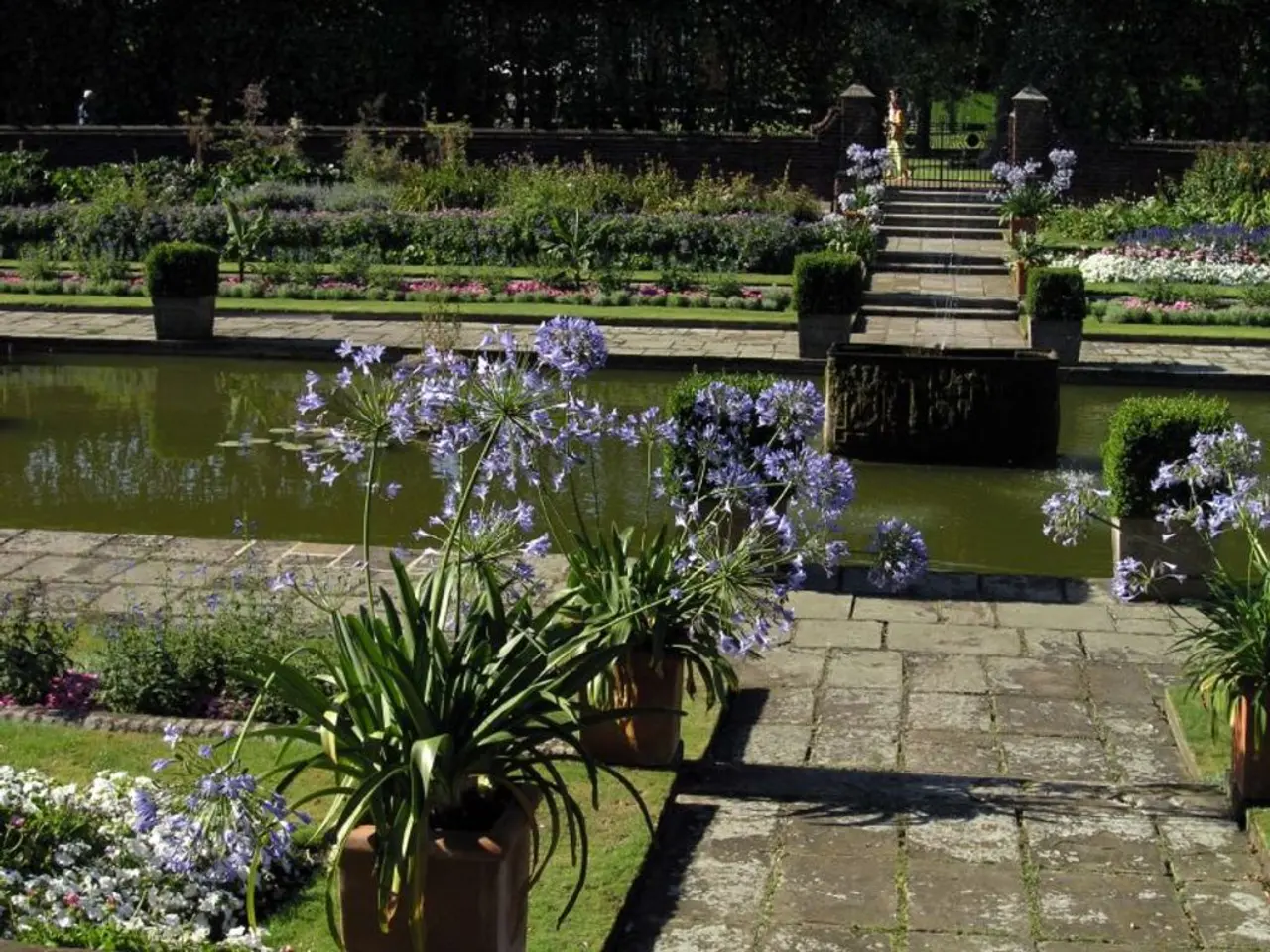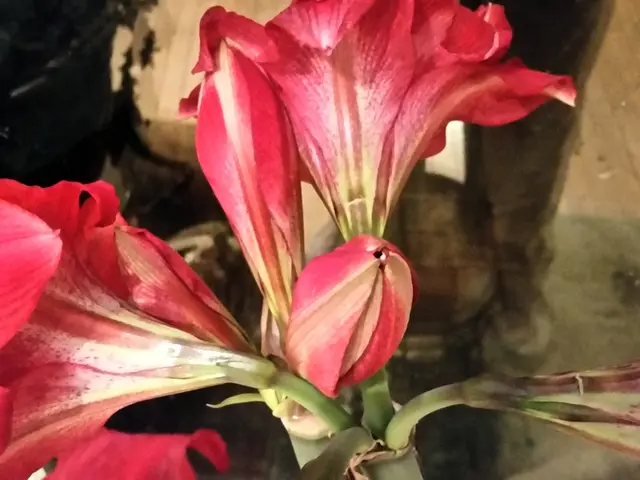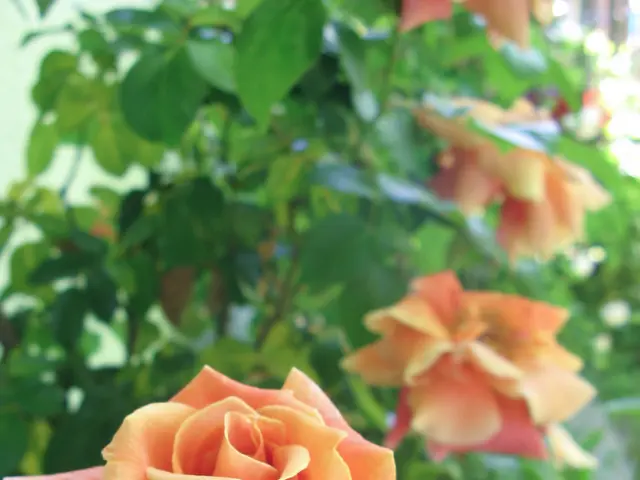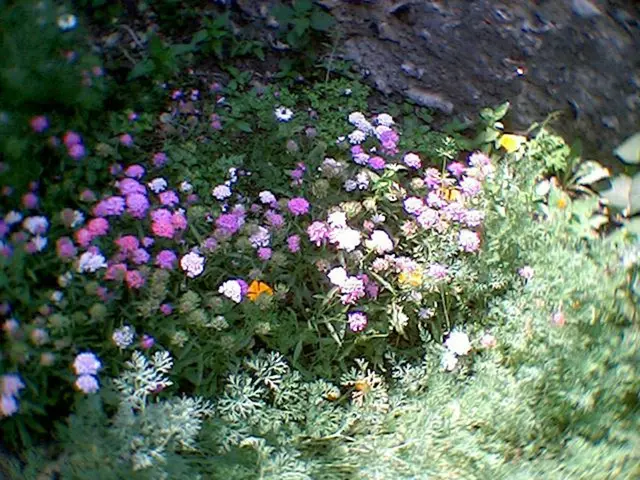Master these 7 ingenious self-watering tricks for an effortless indoor gardening experience:
Reimagined Guide to Self-Watering Indoor Gardens
Keep that lush indoor jungle flourishing without breaking a sweat! With those constant watering schedules a pain in the butt, especially when life gets hectic or travel plans crop up. Your leafy friends deserve better than a parched soil and droopy leaves.
Self-watering solutions are game-changers for plant parents. They offer consistent moisture without the daily grind, giving you peace of mind and your plants the steady hydration they crave. Let's dive into seven clever hacks that'll up your indoor garden game.
1. The Cotton Wick System
Capillary action is your secret weapon in this cunning setup. Cut a piece of cotton rope, thick yarn, or even an old cotton t-shirt strip about 8-12 inches long. Stick one end deep into your plant's soil and the other into a nearby water container.
The material acts as a wick, drawing water up and into the soil as needed. This mimics natural underground water movement and delivers moisture straight to your plant's roots. The beauty of this system is its self-regulating nature. Your greenery receives water only when the soil becomes dry enough to pull moisture through the wick.
Choosing the Right Wick
Not all materials are created equal when it comes to wick systems. Natural fibers like cotton or wool provide excellent capillary action, while synthetic materials often fall short. The thickness matters too - aim for a wick about the diameter of a pencil for medium-sized plants.
Position your water reservoir slightly below or at the level of your plant pot for optimal flow. Elevating the water container too high creates excess pressure and might result in oversaturated plants. You can set up a central watering station with several wicks spreading to different pots, creating an efficient irrigation network for multiple plants.
2. The Empty Wine Bottle Trick
That leftover wine bottle from last night's dinner party can become your plants' new best friend. Fill a clean wine bottle with water, flip it quickly, and nestle the neck into your plant pot's soil.
The water gradually seeps out as the soil dries, providing a steady moisture supply for days. This method works thanks to basic physics with the water creating a vacuum seal that only releases when the soil becomes dry enough to let air into the bottle.
For best results, pop the bottle in about 2 inches into the soil at a slight angle. A standard 750ml bottle can keep a medium-sized plant watered for up to a week.
3. The Water-Globe Stakes
Those decorative glass bulbs aren't just for show - they're functional watering tools. Water globes create a vacuum seal that slowly releases water as the soil dries.
The narrow neck controls the flow rate, preventing overwatering while maintaining consistent soil moisture. Most commercial water globes sustain a medium-sized plant for 7 to 10 days, depending on the plant's water needs and environmental conditions.
Their colorful designs add visual interest to your indoor garden while serving a practical purpose. Plunge them into moist soil at a slight angle for the best results.
DIY Water Globe Alternatives
Don't have store-bought water globes? No worries. Use a plastic water bottle instead with a small hole poked in the cap, fill it with water, and flip it quickly into the soil.
The principle is the same as commercial versions. For a more stylish look, repurpose old light bulbs by carefully removing the internal components (wearing protective gloves) and creating a small opening at the metal base. Fill with water and insert the metal end into the soil for a converted watering tool.
4. The Self-Watering Planters
These specialized containers feature a built-in reservoir that holds water below the soil level. A wicking system draws moisture into the soil as needed, providing consistent hydration for weeks. This physical separation between water and soil prevents root rot while ensuring your plants never go thirsty.
Self-watering planters are perfect for moisture-loving plants and busy households. Many commercial options come with water level indicators to show precisely when to refill. Depending on the plant type and size, these systems typically need refilling every two to four weeks, making them ideal for frequent travelers.
5. The Wicking Saucers Technique
This simple approach makes use of your existing pots and saucers. Place a layer of small stones or aquarium gravel in your plant saucer, add water just below the top of the rocks, then set your potted plant (with drainage holes) on top. The stones create a gap between the pot and standing water, preventing root rot while allowing the pot to draw up moisture as needed.
This method creates a small humidity zone around your plant and works especially well for humidity-loving species like ferns and calatheas.
6. The Drip System Reinvented
Upcycle plastic water bottles into precision irrigation tools. Poke a handful of small holes in the cap, fill the bottle with water, then bury the capped end in your plant's soil. Position the bottle vertically with the uncapped end facing up for easy refilling.
Water slowly drips through the tiny cap holes, providing targeted hydration directly to your plant's root zone. This method works best for plants that prefer their soil to dry slightly between waterings.
Optimizing Your DIY Drip System
Adjust the number of holes in the bottle cap to control the watering rate. A smaller number of larger holes works better for drought-tolerant plants, while more and smaller holes are better for thirsty varieties. Experiment with different configurations to find what works best for your specific plants.
For a cleaner look, bury the bottle completely, leaving the opening visible at soil level. Dress up the visible portion with plant-safe paint or cover with decorative moss.
For longer-lasting reservoirs, combine multiple bottles with flexible tubing to create an expanded system that requires fewer refills.
7. The Humidity Tray Method
This approach creates a microclimate that benefits moisture-loving plants. Fill a shallow tray with pebbles, then add water just below the stones' top. Place your potted plants on this pebble layer, ensuring the pots don't sit directly in water.
As the water evaporates, it increases humidity around your plants, allowing them to draw moisture as needed. This method is especially effective for tropical plants and ferns that thrive in humid environments. The evaporation also helps combat the drying effects of indoor heating and air conditioning.
Designing Specialized Humidity Zones
Group plants with similar humidity needs together on larger trays to create efficient microclimates. Clustering them multiplies the humidifying effect, as plants naturally release moisture through transpiration. Add small aquarium pumps to circulate water in larger humidity trays for better results.
When indoor air is dry in winter, position your humidity trays near but not on radiators or heat sources to speed up evaporation and boost the humidifying effect.
The Intelligence Behind Your Thriving Plants
These self-watering hacks do more than keep your plants alive. They help them thrive with consistent moisture levels that mimic natural conditions. Each system has its advantages, and you might find that different plants in your collection benefit from other approaches.
Start with the most appropriate method for your particular plants and lifestyle. Once you've mastered that technique, experiment with others to find the perfect match for each of your green companions. Your indoor garden will thank you with healthier growth, reduced maintenance time, and the confidence to expand your plant collection without worry.
- Indoor plants can be easily taken care of using the cotton wick system, which utilizes natural fibers like cotton or wool for efficient capillary action, delivering water directly to a plant's roots and maintaining a steady hydration level.
- Invest in home-and-garden accessories like water globes or repurpose objects such as wine bottles or light bulbs for DIY watering tools, as these devices provide a slow and steady moisture supply and help prevent overwatering while promoting a lush indoor landscape.








